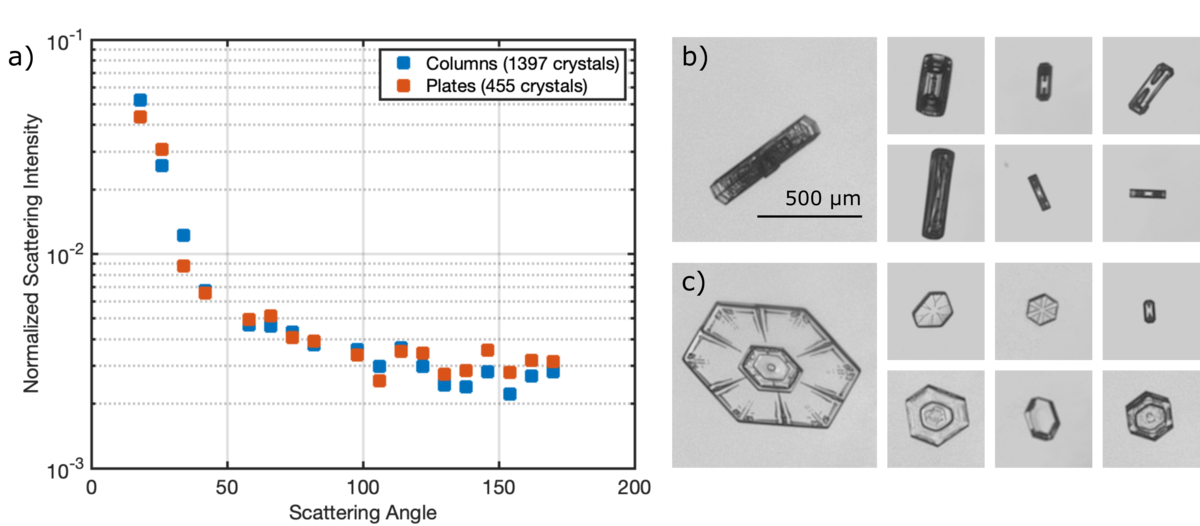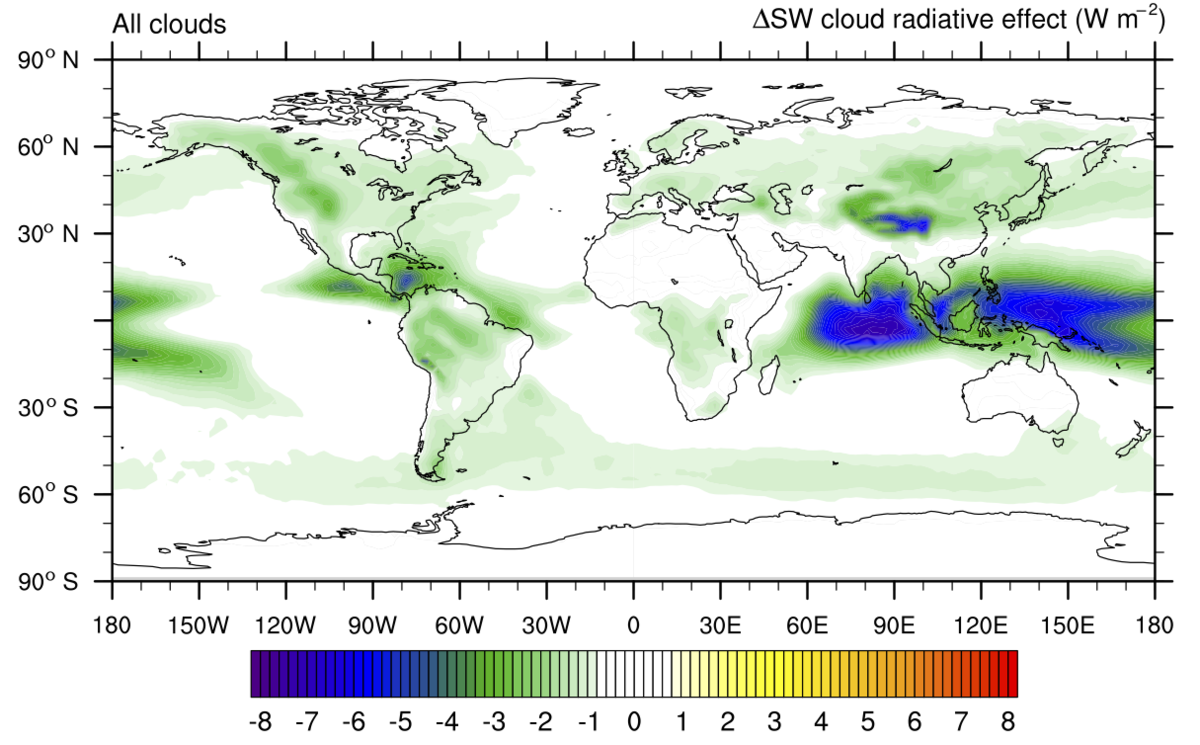Research
1. Detailed Ice Crystal Microphysics
Increasing amount of laboratory and field observations are starting to reveal that deviations from the ideal hexagonal crystal shape are more a rule than an exeption.
We investigate the morphological complexity of laboratory generated and real atmospheric ice crystals. Our methods include high-resolution optical microscopy for studying microscale structures and analysing high-resolution light scattering patters for mesoscale feautures of individual ice crystals.
Read more here:
|
Järvinen, E., Jourdan, O., Neubauer, D., Yao, B., Liu, C., "Additional global climate cooling by clouds due to ice crystal complexity.", Atmos. Chem. Phys., 18, 15767-15781, 2018, doi.org/10.5194/acp-18-15767-2018 |
|
Järvinen, E., Wernli, H., Schnaiter, M., "Investigations of mesoscopic complexity of small ice crystals in mid-latitude cirrus.", Geophys. Res. Lett., 45, 2018, doi.org/10.1029/2018GL079079 |
|
Schnaiter, M., Järvinen, E., Vochezer, P., Abdelmonem, A., Wagner, R., Jourdan, O. and et al.,"Cloud chamber experiments on the origin of ice crystal complexity in cirrus clouds.", Atmos. Chem. Phys., 16, 5091-5110, 2016, http://dx.doi.org/10.5194/acp-16-5091-2016 |
|
Järvinen, E., Schnaiter, M., Mioche, G., Jourdan, O., Shcherbakov, V. and et al., "Quasi-spherical Ice in Convective Clouds.", J. Atmos. Sci., 73, 3885-3910, 2016, doi.org/10.1175/JAS-D-15-0365.1 |
|
Schmitt, C. G., Heymsfield, A. J., Connolly, P., Järvinen, E., and Schnaiter, M., "A global view of atmospheric ice particle complexity.", Geophys. Res. Lett., 43, 1944-8007, 2016 |
2. Ice Crystal Optical Properties
Our main focus lies on characterisation of ice crystal optical properties in the short-wave region. Our aim is to improve the representation of ice cloud short-wave asymmetry parameter in global climate models. For this, we perform field measurements with a polar nephelometer developed at KIT and use the data to develop new measurement-based parameterisations for cloud asymmetry parameter. So far we have been able to show that the short-wave asymmetry parameter is largely determined by the structural complexity of ice crystals. We frequently observe a stable angular scattering function with increased sidewards scattering that is associated with complex crystals.
Read more here:
|
Järvinen, E., Jourdan, O., Neubauer, D., Yao, B., Liu, C., Andreae, M. O., Lohmann, U., Wendisch, M., McFarquhar, G. M., Leisner, T., and Schnaiter, M. "Additional global climate cooling by clouds due to ice crystal complexity.", Atmos. Chem. Phys., 18, 15767-15781, 2018, doi.org/10.5194/acp-18-15767-2018 |
|
Schnaiter, M., Järvinen, E., Abdelmonem, A., Leisner, T., "PHIPS-HALO: the airborne particle habit imaging and polar scattering probe – Part 2: Characterization and first results.", Atmos. Meas. Tech., 11, 341-357, 2018, https://doi.org/10.5194/amt-11-341-2018. |
3. Radiative Properties of Ice Clouds
There exists still a large uncertainty related to the radiative effect of cirrus clouds. Climate and weather forcast models usually assume simplified ice crystals shapes, whose optical properties do not necessary match those of natural cirrus ice crystals. This can cause significant bias in the model. Our studies have shown that cirrus clouds are actually more reflecting than previously though. This can be explained by the increased side- and backscattering from complex crystals compared to their pristine counterparts. We want to improve the short-wave optical parameterisation of cirrus clouds by introducing new optical ice crystal model that is validated using in-situ measurements.
Read more here:
|
Järvinen, E., Jourdan, O., Neubauer, D., Yao, B., Liu, C., Andreae, M. O., Lohmann, U., Wendisch, M., McFarquhar, G. M., Leisner, T., and Schnaiter, M. "Additional global climate cooling by clouds due to ice crystal complexity.", Atmos. Chem. Phys., 18, 15767-15781, 2018, doi.org/10.5194/acp-18-15767-2018 |

%20red.png)

